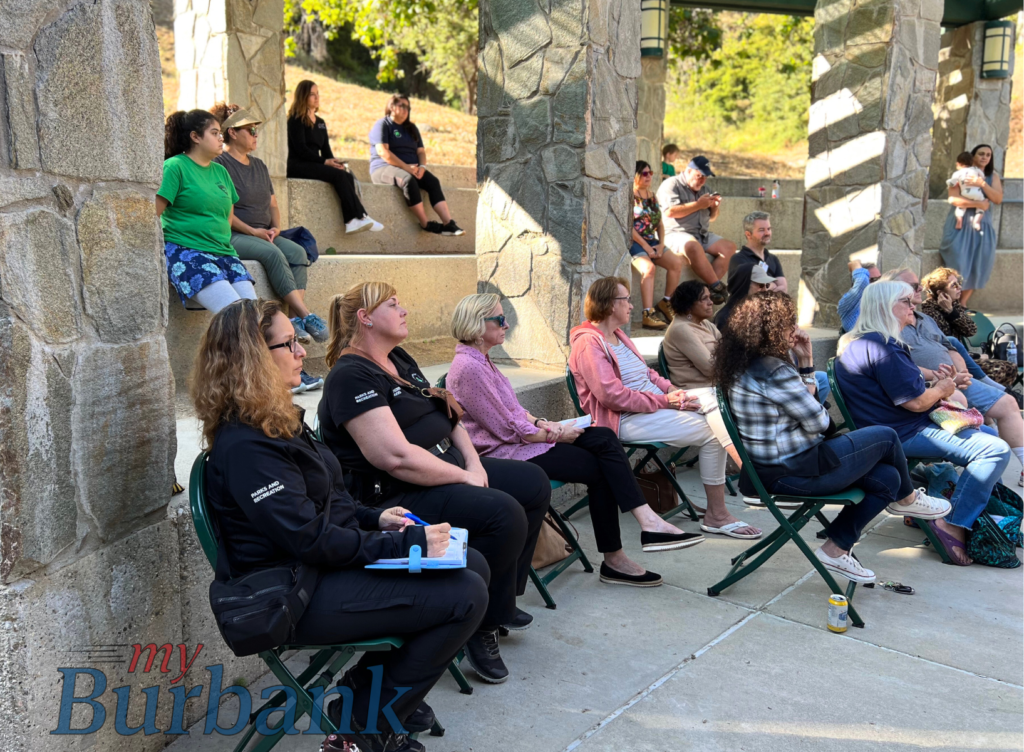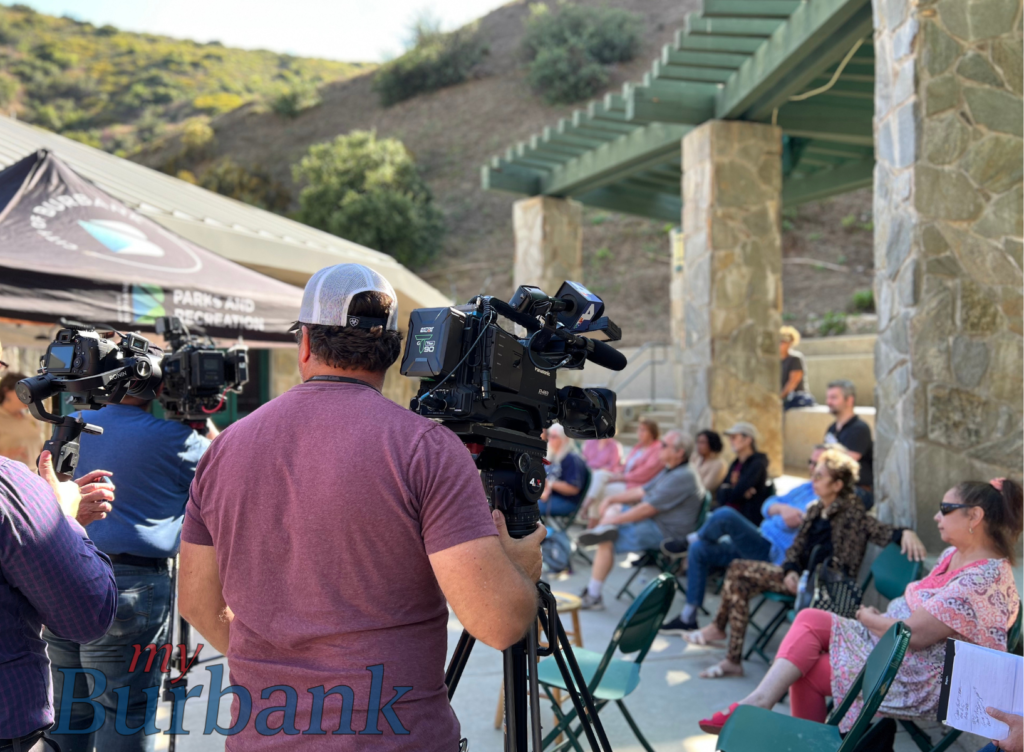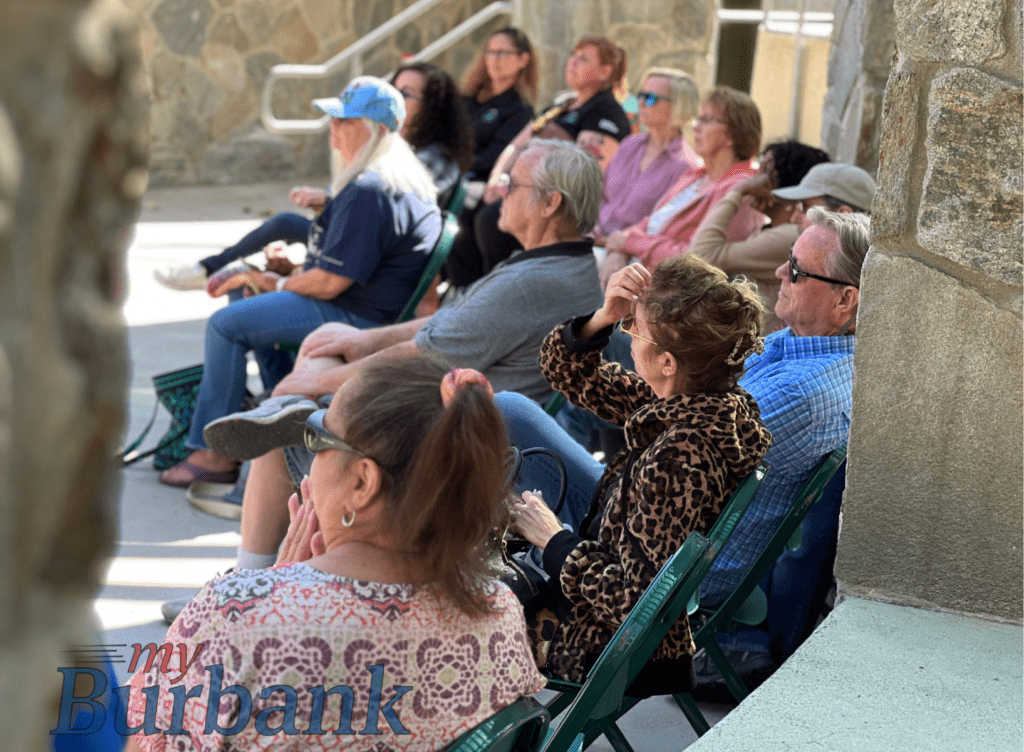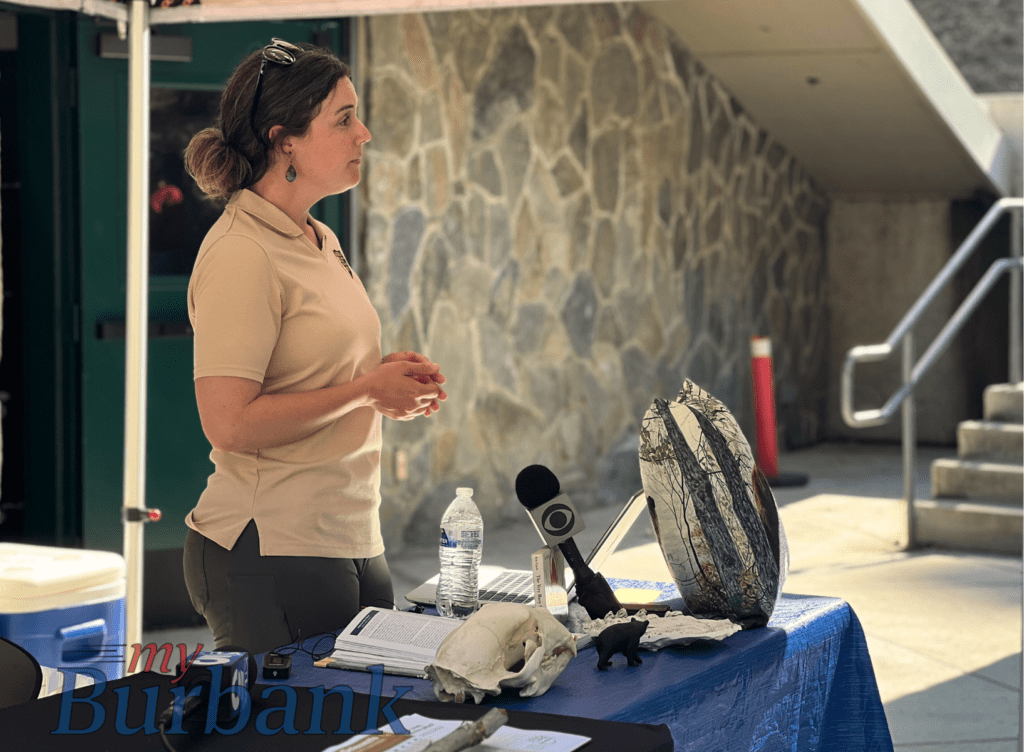
The Burbank Animal Shelter hosted a Burbank Bear Presentation at the Stough Canyon Nature Center led by Biologist Jessica West, from the California Department of Fish and Wildlife (CDFW). The presentation was organized due to the recent black bear sightings happening among residents of Country Club Drive in Burbank.
Many community members came out and voiced different views on the situation, from some wanting the bear translocated from the area, and others just looking for ways to coexistence with the animals. There are currently three known bears in the Verdugo Mountains, that are assumed to be a mother and her two cubs. The cubs are estimated to be about a year and a half and are now branching away from their mother to be on their own.
The presentation covered everything from black bear behavior, reproduction, diet, ecology, habitat, diet, conflict management and deterrents. West is a Human Wildlife Conflict Specialist for CDFW which is part of a brand new program to raise awareness of wildlife and connect with communities through information and site visits. “We recognize that human wildlife conflict is complex. It’s complicated. It’s contextual, to say the least,” said West. “Due to our values, tolerance is going to vary widely, And we also have community knowledge, identities, and traditions that are all interconnected.”
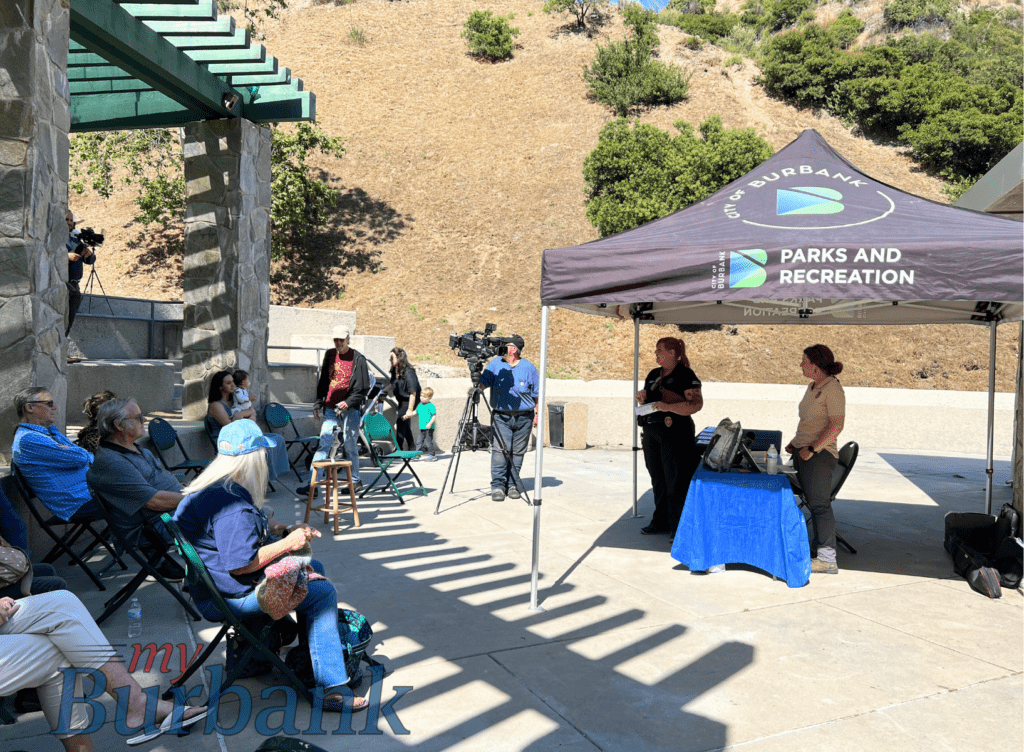
West studies species like bears, mountain lions, bobcats and coyotes and to learn how they are using the landscape. GPS collars and ear tags help to track their movement and how they are entering and leaving residential areas, and how they are using the adjacent natural spaces. Out of the three bears, one is collared and one has an ear tag. This is the first time in our recorded history that we have had cubs here and learning where they are coming in from is vital information.
Residents pulled out their phones to show photos of the identified bears in their yards and near their homes. One resident said the cub came into her yard the day after the collar was placed and was rolling around in the grass. West assured the resident that although they look big and uncomfortable, the collars are no more than 3-5% of the animal’s body weight and that newer technology has improved the size tremendously.
Another resident feared for her life after the bear entered her property. “The big momma bear was three feet away from me. It scared the heck out of me. It was too close. I have a fence around my property. Now what do I got to do? Put up a moat and an electric fence?” she said. Another resident chimed in that these bears don’t respond to airhorns either.

“I recognize that there’s a level of fear,” responded West. “But I guess all I can say is that as someone who’s been working with bears for a long time, I know their behavior. If we felt like there was an immediate risk or concern for public safety, we would respond differently.” She explained that there are around 700,000-800,000 black bears in the United States and fewer than one death by black bear a year.
Unfortunately those statistics weren’t enough to eliminate the concern for the residents near Country Club Drive. After the unprovoked attack and killing of an Arizona man by a black bear, the community is feeling threatened by the bears near their home. One woman spoke up stating that not everyone wants the bears out and that she has heard more cougar attacks on people than bears, and that mountain lions and rattlesnakes should be more a concern. “I really do appreciate this discussion and hearing from both sides,” responded West.
Some residents asked about what to do when they see the bear or if the bear approaches them as there are differences between black bears and grizzly bears and what to do when in a situation with them. Black bears are the most common in Southern California and the name can be deceiving because many of them are actually brown. Grizzly bears were extirpated from California along time ago and is not a concern for residents. Black bears are not confrontational and will avoid human conflict as much as possible. Getting loud and big is the best way to get the bears to turn around or go a different way. Even with cubs, black bears don’t become aggressive like their grizzly cousins. Most will send their babies to run away or flee up a tree.

The main reason the bears have been making their way into the residential areas of Burbank is food. One resident said they found the bear in their pool, another found one in their kitchen, and another had their hot tub cover ripped to shreds. A couple residents talked about the bears devouring the fruit off of their tangerine and loquat trees, and one resident had to remove all of their fruit trees to deter the bears from coming back to their home.
The City of Burbank replaced the trash cans of Country Club Drive with automatic bins that open when dumped upside into the trash trucks, but the bears quickly outsmarted the technology and learned to turn the trash cans upside down to active the lids to open. The community is working together to find ways to secure their trash and work with the city to solve the problem, but for some it’s not happening quick enough.
West’s presentation answered so many questions on black bear behavior and ways for home owners to feel safe in their residence. Handouts and flyers were available for more information and it was a great way for the CDFW to hear first hand experiences from the residents. The entire presentation was recorded and can be watched at www.burbankanimalshelter.org when it becomes available.
For a quick video on the presentation click here!